DSAW Pipe
Double Submerged Arc Welded (DSAW) pipes for reliable and strong construction.
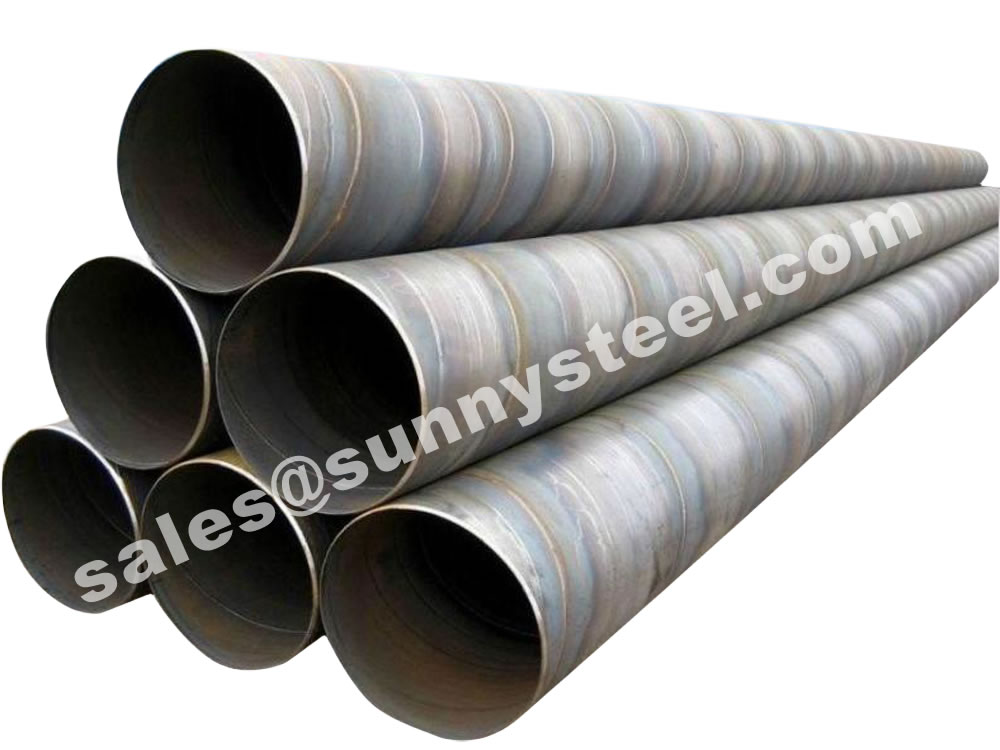
Spiral submerged arc welding(SSAW) is its forward direction and forming tube centerline hose reel molding angle (adjustable), side molding edge welding, and welding them into a spiral.

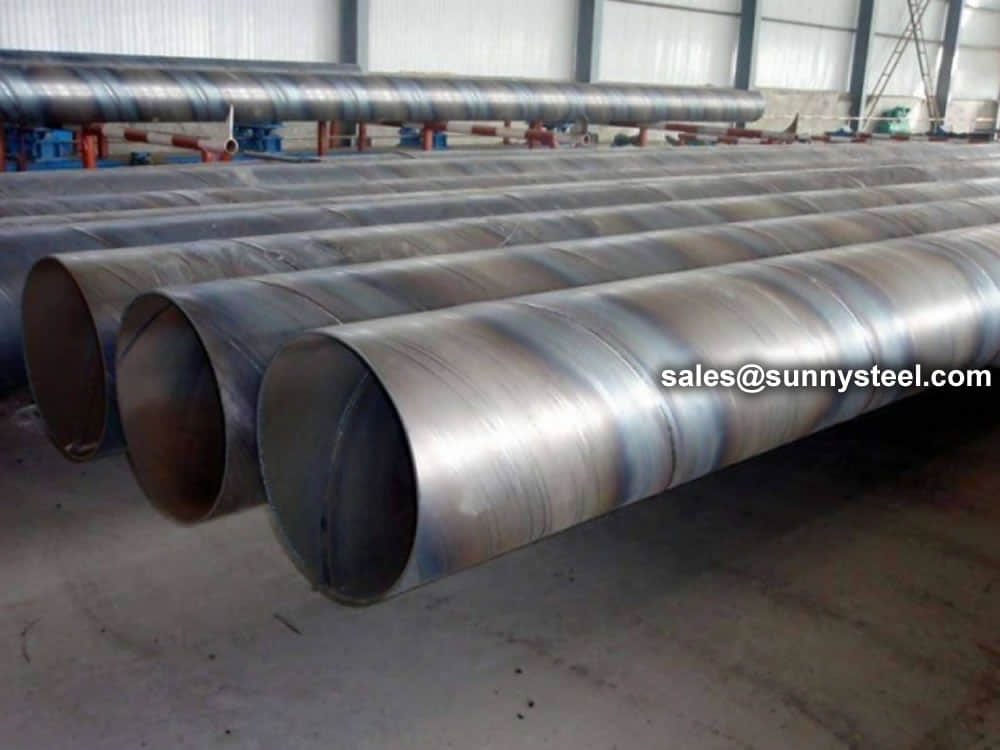
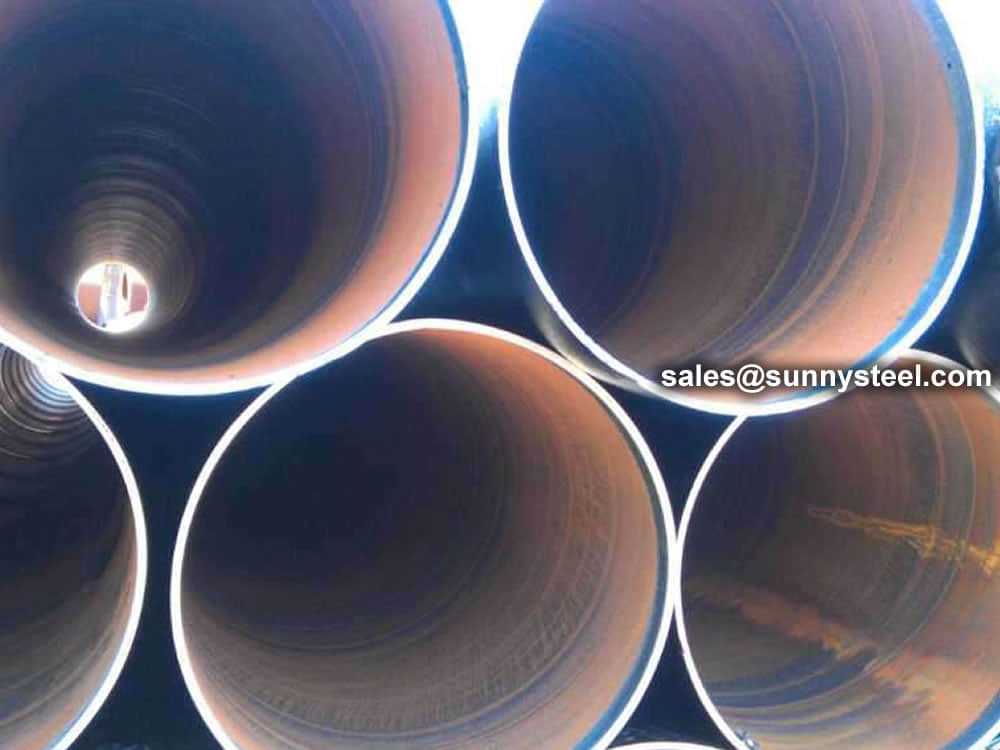
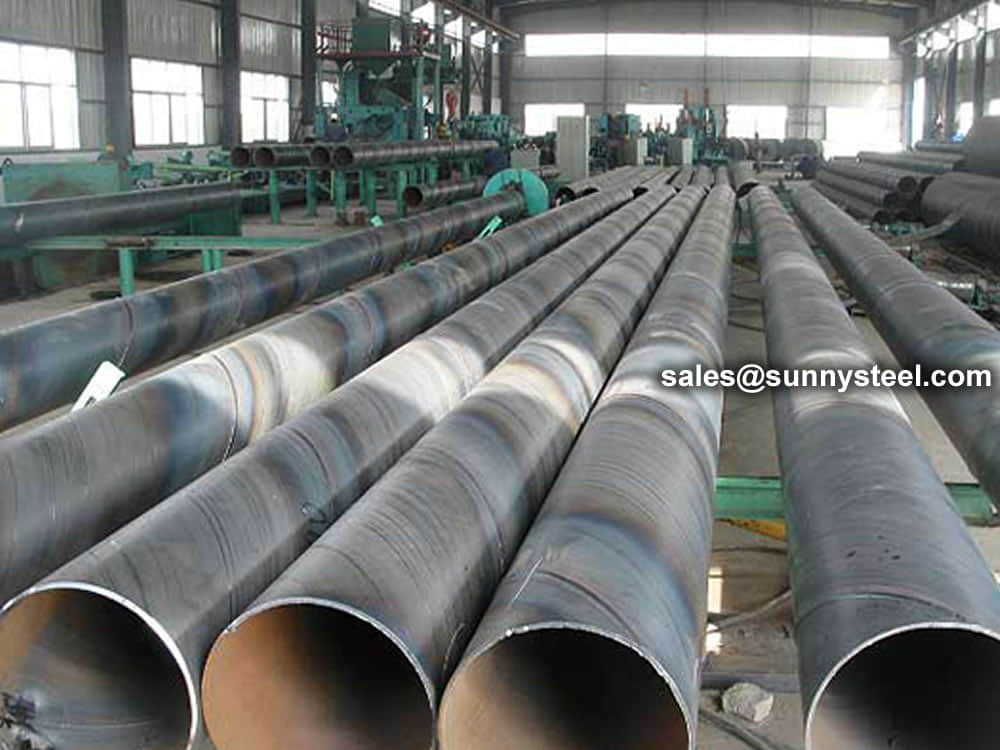
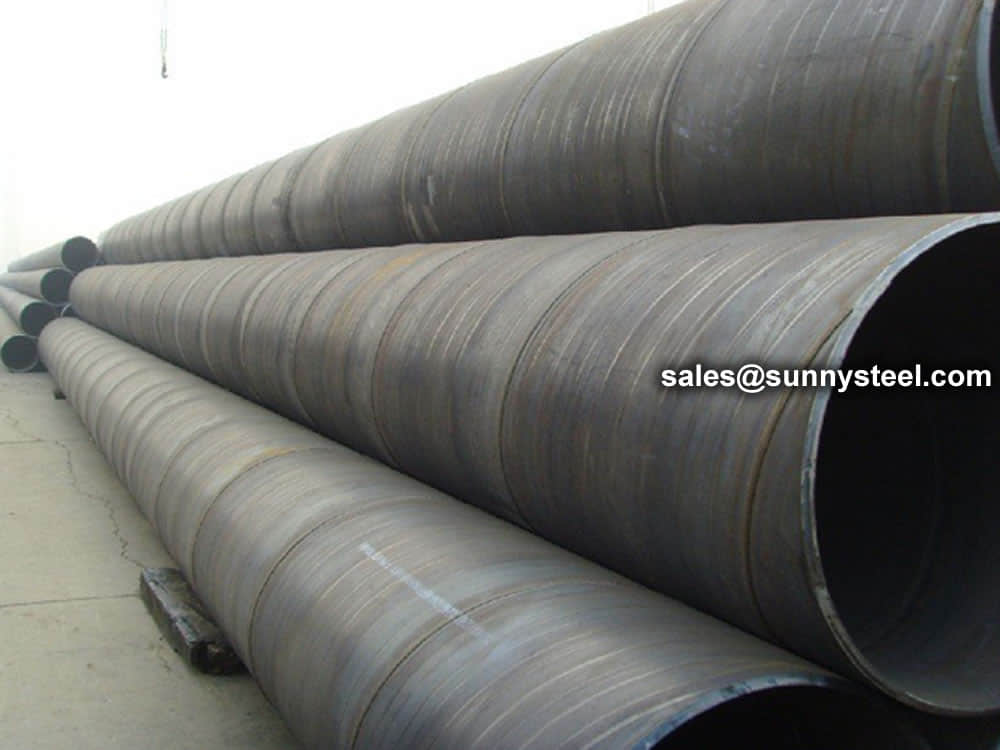
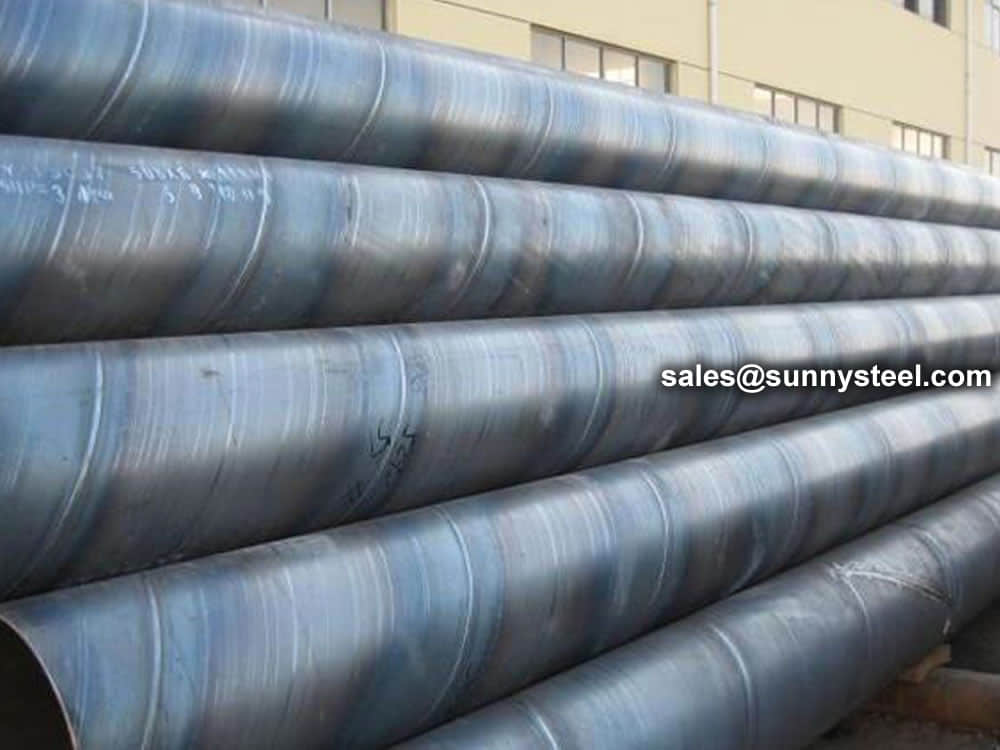
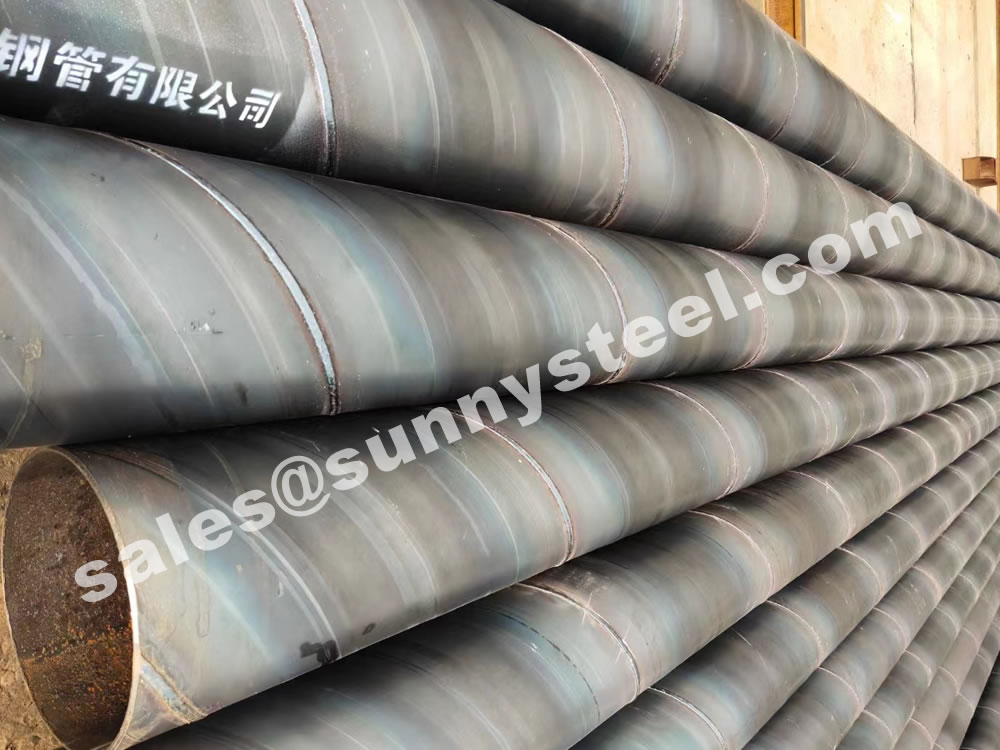
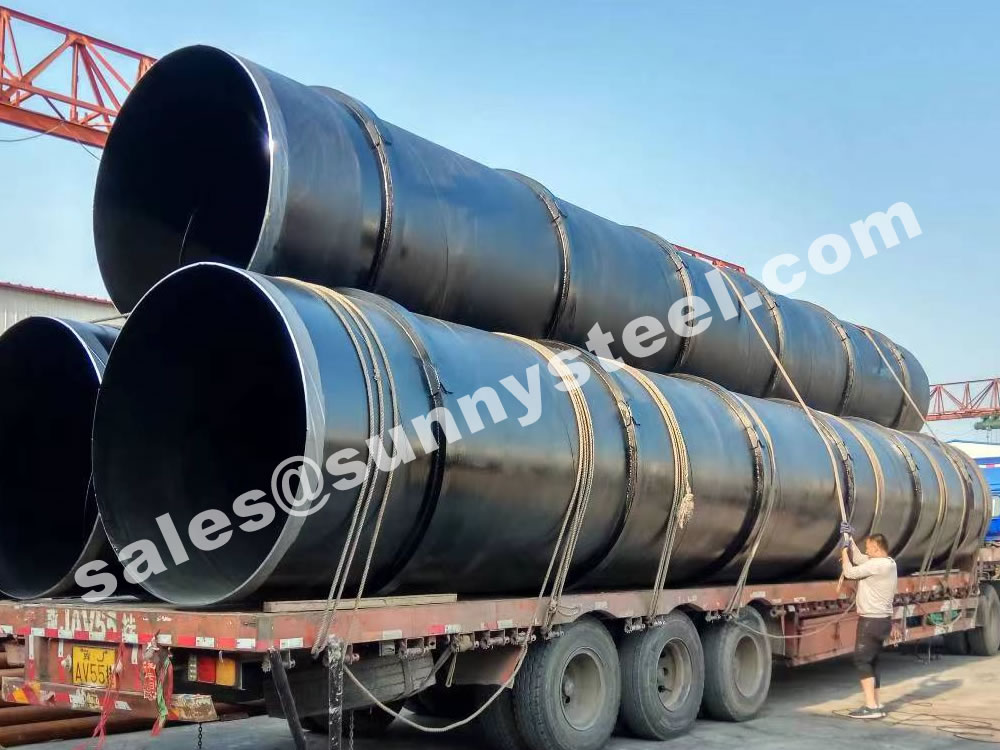

SSAW steel pipe, also known as spiral submerged arc welded steel pipe, is a spiral welded steel pipe produced by double-sided submerged arc welding. Spiral welded pipes are formed using narrower sheets or hot rolled coils, which greatly reduces their production costs. The spiral welding process allows the production of large diameter pipes suitable for transporting large quantities of oil and gas.
Surface: Lightly oiled, Hot dip galvanized, Electro galvanized, Black, Bare, Varnish coating/Antirust oil, Protective Coatings (Coal Tar Epoxy; Fusion Bond Epoxy, 3-layers PE)
SSAW mill line used for making Grade A, B, ~X70 steel coil with thickness 5.0mm to 25.4mm, width 400mm to 2000 mm into Spiral welding pipe with outer diameter from 219 mm to 3020mm through uncoiling, leveling, edge milling, forming and welding. The processing can satisfy producing spiral pipes according to standard API-5L, ASTM A53,GB/T9711-2011.
| Classfication | Standard | Main Products |
|---|---|---|
| Steel Pipe for Fluid Service | GB/T 14291 | Welded pipe for mine fluid sevice |
| GB/T 3091 | Welded pipe for low pressure fluid service | |
| SY/T 5037 | Spirally submerged arc welded steel pipe for pipelines for low pressure fluid service | |
| ASTM A53 | Black and hot-hipped galvanized welded and seamless steel pipe | |
| BS EN10217-2 | Welded steel tybes for pressure purposes - delivery technical conditions - part2: Electric welded non- alloy and alloy steel tubes with specified elevated temperature properties | |
| BS EN10217-5 | Welded steel tybes for pressure purposes - delivery technical conditions - part5: submerged arc welded non-alloy and alloy steel tubes with specified elevated temperature properties | |
| Steel Pipe for Ordinary Structure | GB/T 13793 | Longitudinally electric resistance welded steel pipe |
| SY/T 5040 | Spirally submerged arc welded steel pipe piles | |
| ASTM A252 | Welded and seamless steel pipe piles | |
| BS EN10219-1 | Cold formed welded structural hollow sections of non-alloy and fine grain steels - part1: Technical delivert conditions | |
| BS EN10219-2 | Cold formed welded structural hollow sections of non-alloy and fine grain steels - part2: tolerances dimmsions and sectional properties | |
| Line Pipe | GB/T 9711.1 | Steel pipe for pipeline transportation system of petroleum and natural gas industries(Class A steel pipe) |
| GB/T 9711.2 | Steel pipe for pipeline transportation system of petroleum and natural gas industries(Class B steel pipe) | |
| API 5L PSL1/2 | Line pipe | |
| Casing | API 5CT/ ISO 11960 PSL1 | Steel pipe for use as casing or tubing for wells of petroleum and natural gas industries |
| Standard | Grade | Chemical Composition(max)% | Mechanical Properties(min) | |||||
|---|---|---|---|---|---|---|---|---|
| C | Si | Mn | P | S | Tensile Strength(Mpa) | Yield Strength(Mpa) | ||
| API 5CT | h40 | - | - | - | - | 0.030 | 417 | 417 |
| J55 | - | - | - | - | 0.030 | 517 | 517 | |
| K55 | - | - | - | - | 0.300 | 655 | 655 | |
| API 5L PSL1 | A | 0.22 | - | 0.90 | 0.030 | 0.030 | 335 | 335 |
| B | 0.26 | - | 1.20 | 0.030 | 0.030 | 415 | 415 | |
| X42 | 0.26 | - | 1.30 | 0.030 | 0.030 | 415 | 415 | |
| X46 | 0.26 | - | 1.40 | 0.030 | 0.030 | 435 | 435 | |
| X52 | 0.26 | - | 1.40 | 0.030 | 0.030 | 460 | 460 | |
| X56 | 0.26 | - | 1.40 | 0.030 | 0.030 | 490 | 490 | |
| X60 | 0.26 | - | 1.40 | 0.030 | 0.030 | 520 | 520 | |
| X65 | 0.26 | - | 1.45 | 0.030 | 0.030 | 535 | 535 | |
| X70 | 0.26 | - | 1.65 | 0.030 | 0.030 | 570 | 570 | |
| API 5L PSL2 | B | 0.22 | 0.45 | 1.20 | 0.025 | 0.015 | 415 | 415 |
| X42 | 0.22 | 0.45 | 1.30 | 0.025 | 0.015 | 415 | 415 | |
| X46 | 0.22 | 0.45 | 1.40 | 0.025 | 0.015 | 435 | 435 | |
| X52 | 0.22 | 0.45 | 1.40 | 0.025 | 0.015 | 460 | 460 | |
| X56 | 0.22 | 0.45 | 1.40 | 0.025 | 0.015 | 490 | 490 | |
| X60 | 0.12 | 0.45 | 1.60 | 0.025 | 0.015 | 520 | 520 | |
| X65 | 0.12 | 0.45 | 1.60 | 0.025 | 0.015 | 535 | 535 | |
| X70 | 0.12 | 0.45 | 1.70 | 0.025 | 0.015 | 570 | 570 | |
| X80 | 0.12 | 0.45 | 1.85 | 0.025 | 0.015 | 625 | 625 | |
| ASTM A53 | A | 0.25 | 0.10 | 0.95 | 0.050 | 0.045 | 330 | 330 |
| B | 0.30 | 0.10 | 1.20 | 0.050 | 0.045 | 415 | 415 | |
| ASTM A252 | 1 | - | - | - | 0.050 | - | 345 | 345 |
| 2 | - | - | - | 0.050 | - | 414 | 414 | |
| 3 | - | - | - | 0.050 | - | 455 | 455 | |
| EN10217-1 | P195TR1 | 0.13 | 0.35 | 0.70 | 0.025 | 0.020 | 320 | 320 |
| P195TR2 | 0.13 | 0.35 | 0.70 | 0.025 | 0.020 | 320 | 320 | |
| P235TR1 | 0.16 | 0.35 | 1.20 | 0.025 | 0.020 | 360 | 360 | |
| P235TR2 | 0.16 | 0.35 | 1.20 | 0.025 | 0.020 | 360 | 360 | |
| P265TR1 | 0.20 | 0.40 | 1.40 | 0.025 | 0.020 | 410 | 410 | |
| P265TR2 | 0.20 | 0.40 | 1.40 | 0.025 | 0.020 | 410 | 410 | |
| EN10217-2 | P195GH | 0.13 | 0.35 | 0.70 | 0.025 | 0.020 | 320 | 320 |
| P235GH | 0.16 | 0.35 | 1.20 | 0.025 | 0.020 | 360 | 360 | |
| P265GH | 0.20 | 0.40 | 1.40 | 0.025 | 0.020 | 410 | 410 | |
| EN10217-5 | P235GH | 0.16 | 0.35 | 1.20 | 0.025 | 0.020 | 360 | 360 |
| P265GH | 0.20 | 0.40 | 1.40 | 0.025 | 0.020 | 410 | 410 | |
| EN10219-1 | S235JRH | 0.17 | - | 1.40 | 0.040 | 0.040 | 360 | 360 |
| S275JOH | 0.20 | - | 1.50 | 0.035 | 0.035 | 410 | 410 | |
| S275J2H | 0.20 | - | 1.50 | 0.030 | 0.030 | 410 | 410 | |
| S355JOH | 0.22 | 0.55 | 1.60 | 0.035 | 0.035 | 470 | 470 | |
| S355J2H | 0.22 | 0.55 | 1.60 | 0.030 | 0.030 | 470 | 470 | |
| S355K2H | 0.22 | 0.55 | 1.60 | 0.030 | 0.030 | 470 | 470 | |

Packing: Plastic plugs in both ends, Hexagonal bundles of max. 2,000kg with several steel strips, Two tags on each bundle, Wrapped in waterproof paper, PVC sleeve, and sackcloth with several steel strips, Plastic caps.
| NOMINAL SIZE DN | IMPERIAL SIZE | OUTSIDE DIAMETER MM (Ø) | WALL THICKNESS MM (t) | TYPE | LENGTH | MASS KG/METRE |
|---|---|---|---|---|---|---|
| 350 | 14" | 355.6 | 6.4 | SSAW | 12 | 55.12 |
| 350 | 14" | 355.6 | 9.5 | SSAW | 9 | 81.09 |
| 350 | 14" | 355.6 | 9.5 | SSAW | 12 | 81.09 |
| 350 | 14" | 355.6 | 12.7 | SSAW | 12 | 107.4 |
| 350 | 14" | 355.6 | 15.9 | SSAW | 12 | 133.2 |
| 350 | 14" | 406.4 | 25.4 | SSAW | 12 | 206.46 |
| 400 | 16" | 406.4 | 6.4 | SSAW | 12 | 63.13 |
| 400 | 16" | 406.4 | 9.5 | SSAW | 12 | 92.99 |
| 400 | 16" | 406.4 | 12.7 | SSAW | 12 | 123.31 |
| 400 | 16" | 406.4 | 15.9 | SSAW | 12 | 153.12 |
| 450 | 18" | 457 | 6.4 | SSAW | 12 | 71.12 |
| 450 | 18" | 457 | 9.5 | SSAW | 12 | 104.84 |
| 450 | 18" | 457 | 12.7 | SSAW | 12 | 139.16 |
| 450 | 18" | 457 | 15.9 | SSAW | 12 | 172.96 |
| 500 | 20" | 508 | 6.4 | SSAW | 12 | 79.17 |
| 500 | 20" | 508 | 9.5 | SSAW | 12 | 116.79 |
| 500 | 20" | 508 | 12.7 | SSAW | 12 | 155.13 |
| 500 | 20" | 508 | 15.9 | SSAW | 12 | 192.96 |
| 500 | 20" | 508 | 16 | SSAW | 13 | 194.14 |
| 550 | 22" | 559 | 12.5 | SSAW | 12 | 168.47 |
| 550 | 22" | 559 | 16 | SSAW | 12 | 214.26 |
| 600 | 24" | 610 | 6.4 | SSAW | 12 | 95.27 |
| 600 | 24" | 610 | 9.5 | SSAW | 12 | 140.69 |
| 600 | 24" | 610 | 12.7 | SSAW | 12 | 187.07 |
| 600 | 24" | 610 | 15.9 | SSAW | 12 | 232.96 |
| 600 | 24" | 610 | 17.48 | SSAW | 12 | 255.43 |
| 600 | 24" | 610 | 20 | SSAW | 12 | 291.01 |
| 600 | 24" | 610 | 25.4 | SSAW | 12 | 366.19 |
| 600 | 24" | 610 | 31 | SSAW | 12 | 442.65 |
| 650 | 26" | 660 | 10 | SSAW | 12 | 160.3 |
| 650 | 26" | 660 | 12.7 | SSAW | 12 | 202.74 |
| 650 | 26" | 660 | 20 | SSAW | 12 | 315.67 |
| 700 | 28" | 711 | 9.5 | SSAW | 12 | 164.35 |
| 700 | 28" | 711 | 12.7 | SSAW | 12 | 218.71 |
| 700 | 28" | 711 | 15.9 | SSAW | 12 | 272.56 |
| 700 | 28" | 711 | 20 | SSAW | 13 | 340.82 |
| 750 | 30" | 762 | 9.5 | SSAW | 12 | 176.3 |
| 750 | 30" | 762 | 12.7 | SSAW | 12 | 234.68 |
| 750 | 30" | 762 | 15.9 | SSAW | 12 | 292.56 |
| 750 | 30" | 762 | 20 | SSAW | 12 | 365.9 |
| 800 | 32" | 813 | 9.5 | SSAW | 12 | 188.25 |
| 800 | 32" | 813 | 12.7 | SSAW | 12 | 250.66 |
| 800 | 32" | 813 | 16 | SSAW | 12 | 314.48 |
| 800 | 32" | 813 | 20 | SSAW | 12 | 391.13 |
| - | - | 820 | 16 | SSAW | 11.9 | 317.25 |
| 850 | 34" | 864 | 7.9 | SSAW | 8 | 166.79 |
| 900 | 36" | 914 | 9.5 | SSAW | 12 | 211.91 |
| 900 | 36" | 914 | 12.7 | SSAW | 12 | 282.29 |
| 900 | 36" | 914 | 15.9 | SSAW | 12 | 352.16 |
| - | - | 900 | 20 | SSAW | 12 | 434.04 |
| 900 | 36" | 914 | 20 | SSAW | 12 | 440.95 |
| 950 | 38" | 965 | 9.5 | SSAW | 6.2 | 223.86 |
| 1000 | 40" | 1016 | 10 | SSAW | 12 | 248.09 |
| 1000 | 40" | 1016 | 16 | SSAW | 12 | 394.58 |
| - | - | 1032 | 20 | SSAW | 7.2 | 499.15 |
| 1050 | 42" | 1067 | 9.5 | SSAW | 12 | 247.76 |
| 1050 | 42" | 1067 | 12.7 | SSAW | 12 | 330.21 |
| 1050 | 42" | 1067 | 15.9 | SSAW | 12 | 412.16 |
| 1200 | 48" | 1219 | 9.5 | SSAW | 12 | 283.37 |
| 1200 | 48" | 1219 | 12.7 | SSAW | 12 | 377.81 |
| 1200 | 48" | 1219 | 15.9 | SSAW | 12 | 471.76 |
| 1200 | 48" | 1219 | 20 | SSAW | 12 | 591.38 |
Pipes can be sourced conforming to AS/NZS3678 Grade 350 L0 & manufactured to AS/NZS1163 tolerances & to grade C350 L0.
Pipes/piles can be sourced at longer lengths or with piling shoes spliced/welded to AS1554.1.
Spiral welded pipe production by submerged arc method is based on using tandem welding technique for joining inside and outside coil edges, which have been trimmed and beveled by carbide milling for high quality weld structure.
Thermatool designs and manufactures Spiral Seam Annealing systems for producers of SAW (submerged arc welded) API line pipe.
Offering all the basic features and benefits of Thermatool seam annealing systems designed for operation on longitudinally welded API pipe, Thermatool Spiral Seam Annealing systems, however, require the installation of specially “shaped” inductors.
These are custom designed on CAD systems in order to precisely follow the helix angle for a specific pipe diameter.
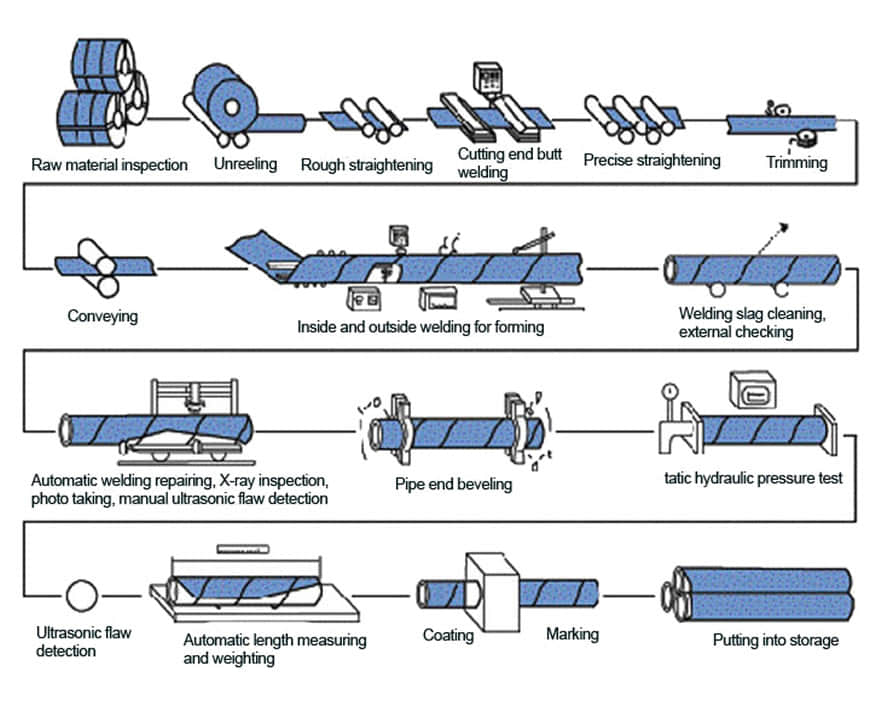
There are nine modernized product lines in our company with the yield capacity of 1000 thousands tons of B-X80 steel pipe of φ219-φ3200mm, WT5-30mm.




Spiral steel pipe (SSAW/ SAWH) is also called spiral welded pipe. It is made by rolling a low-carbon structural steel or low-alloy structural steel strip at a certain helical angle (called a forming angle) into a tube blank, and then welding the tube seams. It can be produced with narrower strip steel. Large diameter steel pipe.
Pipeline coating is the most consistent and successful solution for protecting ERW pipes from corrosion, from moisture, other harmful chemicals.
Anti-corrosion steel pipe is processed through the preservation process, which can effectively prevent or slow down the process in the transport and use of chemical or electrochemical corrosion reaction of steel pipe.
Therefore pipe anti-corrosion layer is an important barrier to prevent soil erosion. A well-known foreign scholar put forward” 3PE france protective layer”, so far, anti-corrosion methods is widely used.
Coated pipes offer high resistance to corrosion on pipes and provide many benefits such as:
The basic principles of urban gas pipeline coating selection:
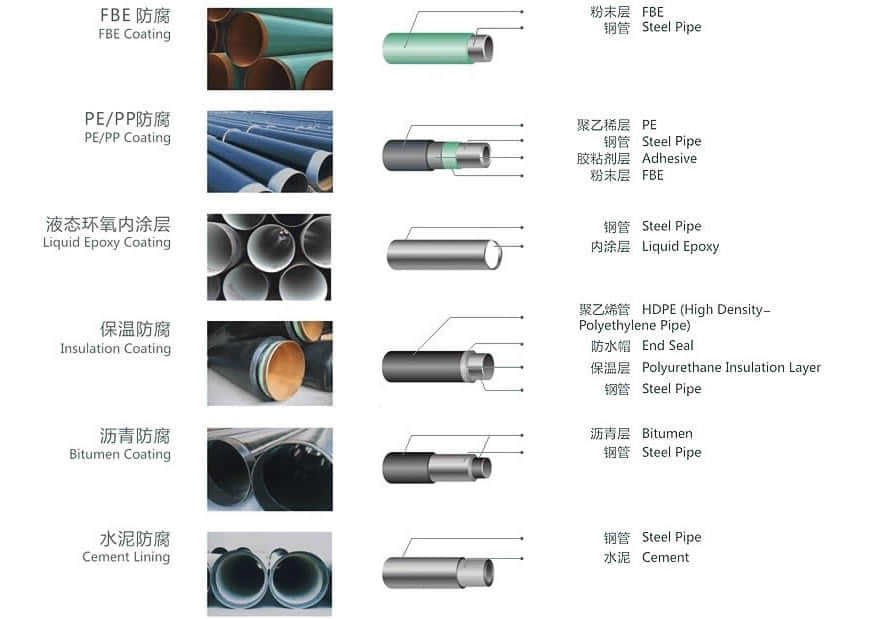
The alloy content of the coil is often lower than similar grades of steel plate, improving the weldability of the spiral welded pipe. Due to the rolling direction of spiral welded pipe coil is not perpendicular to the pipe axis direction, the crack resistance of the spiral welded pipe materials.
Welded steel pipe refers to a steel pipe with seams on the surface that is welded by bending and deforming a steel strip or steel plate into a circular, square or other shape. The blanks used for welded steel pipes are steel sheets or strips.
Since the 1930s, with the rapid development of continuous rolling production of high-quality strip steel and the advancement of welding and inspection technology, the quality of welds has been continuously improved, and the varieties and specifications of welded steel pipes have been increasing.
When the T-shaped welded steel pipe contains Ni, it has strong corrosion resistance in an acidic environment. In an environment containing sulfuric acid or hydrochloric acid, the higher the Ni content in the T-shaped welded steel pipe, the stronger the corrosion resistance. Under normal circumstances, only adding Cr to the T-shaped welded steel pipe can prevent the phenomenon of corrosion. The poor edge condition of the strip is another important cause of misalignment. The effects of changes in mass flow, heat flow density and structural parameters (ratio of helical curvature diameter to T-shaped welded steel pipe diameter Dc/D) on the heat transfer coefficient of saturated bubble boiling in vertical spiral pipes.
During the production of T-shaped welded steel pipes, misalignment occurs from time to time, and there are many influencing factors. In production practice, the steel pipe is often degraded by the wrong side and out of tolerance. Therefore, it is necessary to analyze the reasons for the misalignment of the spiral steel pipe and its preventive measures.
Due to the poor shape and dimensional accuracy of the head and tail of the uncut steel strip, it is easy to cause the steel strip to bend hard and cause misalignment during butt joint. Simulation parameter range: vertical pipe: pipe diameter D=10mm, pipe length L=660mm; three types of vertical T-shaped welded steel pipe: pipe diameter D=10mm, the change of the ratio of the curvature diameter of the T-shaped welded steel pipe to the spiral pipe diameter is Dc /D=15, 20, 25, helical pitch Pt=20mm, tube lengths are L=503mm, L=660mm, L=817mm respectively. Mass flow G=200~400Kg/(m'2 s), heat flux density q=5~15KW/m'2, saturation pressure p, saturation=0.414880MPa, saturation temperature T, saturation=283.15K.
The technical requirements and inspection of welded pipes are based on the provisions of the GB3092 "Welded Steel Pipes for Low-Pressure Fluid Transmission". It can be delivered according to fixed length or double length. The surface of the steel pipe should be smooth, and defects such as folds, cracks, delamination, and lap welding are not allowed. The surface of the steel pipe is allowed to have minor defects such as scratches, scratches, weld misalignment, burns and scars that do not exceed the negative deviation of the wall thickness. The thickening of the wall thickness and the presence of inner seam weld bars are allowed at the weld.
Welded steel pipes should be subjected to mechanical performance test, flattening test and flaring test, and must meet the requirements of the standard. When the steel pipe should be able to withstand the internal pressure, carry out a pressure test of 2.5Mpa, and keep it for one minute without leakage. The method of eddy current flaw detection is allowed to replace the hydrostatic test. The eddy current flaw detection is carried out according to the standard of GB7735 "Steel tube eddy current flaw detection inspection method". The eddy current flaw detection method is to fix the probe on the frame, keep a distance of 3~5mm between the flaw detection and the weld seam, and conduct a comprehensive scan of the weld seam by the rapid movement of the steel pipe. The flaw detection signal is automatically processed and sorted by the eddy current flaw detector. To achieve the purpose of flaw detection. The welded pipe after the flaw detection is cut off according to the specified length with a flying saw, and it is rolled off the assembly line through the turning frame. Both ends of the steel pipe should be chamfered with flat ends, printed with marks, and the finished pipes are packed in hexagonal bundles before leaving the factory.
Straight seam steel pipe is a steel pipe whose weld seam is parallel to the longitudinal direction of the steel pipe. Generally, its strength is higher than that of straight seam welded pipe. Narrower billets can be used to produce welded pipes with larger diameters, and the same width of billets can be used to produce welded pipes with different pipe diameters. But compared with the straight seam pipe of the same length, the weld length is increased by 30~100%, and the production speed is lower. So what are its processing methods?
The surface quenching and tempering heat treatment of straight seam welded pipe is usually carried out by induction heating or flame heating. The main technical parameters are surface hardness, local hardness and effective hardened layer depth. Vickers hardness tester can be used for hardness testing, and Rockwell or superficial Rockwell hardness tester can also be used. When the surface heat treatment hardened layer is thick, the Rockwell hardness tester can also be used. When the thickness of the heat-treated hardened layer is 0.4-0.8mm, the HRA scale can be used, and when the thickness of the hardened layer exceeds 0.8mm, the HRC scale can be used.
If the parts require high local hardness, local quenching heat treatment can be carried out by means of induction heating. Such longitudinal welded pipes usually need to mark the location of local quenching heat treatment and local hardness value on the drawing. Hardness testing of longitudinally welded pipes shall be carried out in the area. The hardness testing instrument can use a Rockwell hardness tester to test the HRC hardness value. If the heat-treated hardened layer is shallow, a surface Rockwell hardness tester can be used to test the HRN hardness value.
The three hardness values of Vickers, Rockwell and Superficial Rockwell can be easily converted to each other and converted into hardness values required by standards, drawings or users. The corresponding conversion tables are given in the international standard ISO, the American standard ASTM and the Chinese standard GB/T.

When you partner with Sunny Steel, you can stop worrying about meeting deadlines thanks to our responsive and timely service. You'll also say goodbye to unnecessary shopping around. Instead, you'll get white glove service from an expert who understands your needs and can get you the materials you need quickly.
